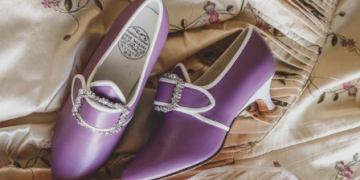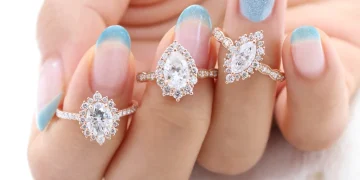Gemstones have captivated our imagination for centuries, with their dazzling beauty and inherent mystery. Beyond their allure in the world of fashion and jewelry, gemstones have also played a significant role in literature, adding depth and symbolism to the written word. In this article, we will explore how gemstones have been used as powerful literary devices, weaving their way into the tapestry of storytelling. So, grab a cup of tea and join us on this dazzling literary journey!
Unlocking Symbolism:
Throughout literature, gemstones have been employed as symbols, representing various themes and concepts. Diamonds, for instance, often symbolize wealth, power, and purity. Think about the stunning Lab diamond engagement rings, sparkling on the fingers of protagonists, symbolizing eternal love and commitment. These precious stones epitomize the timeless beauty and the promise of enduring relationships.
Similarly, emeralds have been associated with nature, growth, and renewal. In stories, emeralds may serve as a representation of the protagonist’s quest for self-discovery or their connection with the natural world. On the other hand, rubies and sapphires have been used as symbols of passion, desire, and royalty, adding an element of intensity and grandeur to the narrative.
Transporting Imagery:
Beyond their symbolic value, gemstones also serve as tools to enhance the imagery and ambiance of a literary work. Descriptions of gemstones and their vivid hues can transport readers to fantastical realms, evoking a sense of wonder and enchantment. Imagine a necklace adorned with shimmering pearls, described as “luminous tears of the sea,” or a pendant adorned with an amber stone, described as “capturing the golden rays of the setting sun.”
Authors skillfully employ gemstones to create visual and sensory experiences, allowing readers to immerse themselves in the world of the story. From the sparkling depths of an amethyst cave to the glimmering facets of a topaz tiara, gemstones breathe life into the pages of literature, making the tales all the more captivating.
Classic Examples:
Some of the most iconic works of literature have beautifully incorporated gemstones, leaving an indelible mark on readers’ minds. Take, for example, J.R.R. Tolkien’s “The Lord of the Rings,” where the One Ring, adorned with a mesmerizing red gem called the One Ring’s Eye, symbolizes the ultimate power and evil.
In F. Scott Fitzgerald’s “The Great Gatsby,” the green light at the end of Daisy Buchanan’s dock, often associated with emeralds, represents Gatsby’s unattainable dream and the corruption of the American Dream. The emerald necklace in Guy de Maupassant’s “The Necklace” serves as a potent symbol of the protagonist’s obsession with wealth and status.
Conclusion:
Gemstones in literature are not merely pretty ornaments or lavish details but convey deeper meanings, adding layers of complexity to the narratives. From their symbolism to their vivid imagery, gemstones allow authors to create memorable characters and thought-provoking stories. So, the next time you come across a reference to a gemstone while reading, take a moment to appreciate the subtle messages and enchanting beauty they bring to the literary world.
















